Table of Contents
Zoom instructions
In order to have the best experience, we have a strong preference to host the seminars in person. However, for accessibility, we also open it to online audiences as well. Please if you plan to join online, it is often helpful to let the organiser know in advance—this means the speaker can be warned and/or we can ensure that all the tech is set up properly.
Join Zoom Meeting https://bath-ac-uk.zoom.us/j/94397983249?pwd=QllOQUw3U3JzRGdiWE82TS9WRGQ1Zz09
Meeting ID: 943 9798 3249 Passcode: 264978 Find your local number: https://bath-ac-uk.zoom.us/u/acMPWc7uN2
2023-24
Hilary Weller
Date: Tuesday 10 Oct 2023 1:15pm
From: The University of Reading, Meterology
Location: 4 West 1.7 (Wolfson Room)
Title: Implicit Time Stepping for Atmospheric Transport
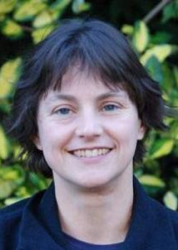
Transport in models of the global atmosphere can lead to severe time step restrictions, particularly over the poles of a latitude-longitude grid or where convective updrafts are resolved. This has been solved before by the use of semi-Lagrangian advection and by the use of quasi-uniform grids such as the cubed-sphere instead of latitude-longitude. However semi-Lagrangian transport is not conservative: the transported quantity is not conserved. And the use of quasi-uniform grids does not solve the problem of time step restrictions due to strong convective updrafts. Better ways are needed to ensure model stability either where winds (or updrafts) are strong or where grid spacing is small.
Implicit time stepping for transport is not popular in atmospheric science as it has been assumed to be expensive, complicated, inaccurate and does not scale well on large parallel computers. I will challenge these assumptions. Implicit time stepping can actually be simple to implement and, if it is used only where needed, then accuracy is maintained. Implicit advection is conservative, can be used with any grid structure of the sphere, can exploit improvements in solver efficiency and parallelisation and can provide stable solutions for large time steps. I will show how this can be achieve and will show solutions on pure transport cases and for solutions of the Navier-Stokes equations.
Alexander Wray
Date: Tuesday 17 Oct 2023 1:15pm
From: University of Strathclyde, Mathematics
Location: 4 West 1.7 (Wolfson Room)
Title: The evaporation of arrays of non-circular droplets and applications to OLED manufacture
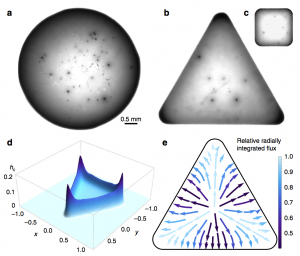
The evaporation of droplets has been a much-studied problem in recent years, finding applications everywhere from the spraying of pesticides on leaves to diagnostic applications of blood drying. Unfortunately, many of the most critical industrial applications, such as the printing of OLED screens, involve arrays of droplets with polygonal footprints in close enough proximity to one another that the evaporative behaviours interfere with one another via the vapour phase. This is in stark contrast to the state of the theoretical literature in which we have only had techniques for dealing with droplets with circular or elliptic footprints, and even then, only for such droplets in isolation.
We discuss recent advancements in this area relaxing both of these constraints, demonstrating how arbitrary arrays of non-circular droplets may be analysed theoretically. We examine a variety of industrially relevant problems, including the evaporative behaviours of rectangular droplets (used for OLED screens), as well as a continuum formulation designed to cope with the extremely large arrays observed in 8K screens (O(10^8) droplets). We briefly discuss the uses of these solutions in other physical contexts.
Aleksandra Ardaševa
Date: Tuesday 31 Oct 2023 1:15pm
From: University of Copenhagen, Niels Bohr Institute
Location: 4 West 1.7 (Wolfson Room)
Title: Interactive active matter
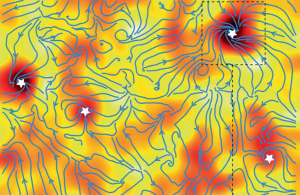
Active matter encompasses a wide range of systems that consist of individuals, which extract energy from their surroundings and convert it into mechanical work. Such individuals, including bacteria and eukaryotic cells, exist in extremely diverse environments, which, in turn, lead to a complex network of inter- and intra-population interactions. Mechanical forces, exerted and experienced by cells, can act as messengers, regulating individual behaviour, however, how they lead to emergent collective behaviours and the emergence of liquid crystalline features in such active systems have not been elucidated yet. Here, by utilising a suite of theoretical models at different scales, such as continuum liquid crystal theory and cell-based phase-field formulation, we investigate how mechanical interactions with surroundings and other cells can lead to collective cell migration.
Rob Lamb
Date: Tuesday 7 Nov 2023 1:15pm
From: University of Lancaster & JBA Trust
Location: 4 West 1.7 (Wolfson Room)
Title: Grappling with uncertainty monsters in hydrology: how can we cope?
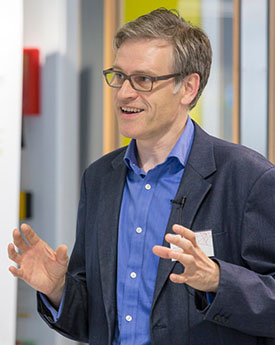
Hydrology, amongst other environmental sciences, is fraught with uncertainties. I will borrow a monster metaphor to explore these uncertainties in hydrology, and how our practical responses to them can sometimes lead to pathological coping strategies. I will argue that the uncertainty monster manifests in practical hydrology through a proliferation of model formulations, which cannot always be conclusively accepted or rejected, or distinguished from each other given the limitations of our observed data. We might stand a better chance of coping with the monster if we could test and compare our models in ways that expose their fundamental traits, and can be compared with theoretically-motivated benchmarks.
Matthew Juniper
Date: Tuesday 14 Nov 2023 1:15pm
From: University of Cambridge, Energy, Fluids and Turbomachinery
Location: 4 West 1.7 (Wolfson Room)
Title: Adjoint-accelerated Bayesian Inference
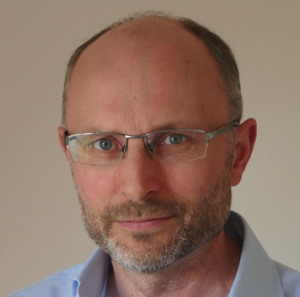
“Bayesian Inference provides a probabilistic framework that is well suited to Machine Learning of model parameters from data. We specify any number of candidate models, their parameters, and their prior probability distributions. When data arrives, we calculate (i) the most likely parameter values, (ii) their posterior probability distributions, (iii) the marginal likelihood of each model. This combines how well each model fits the data with how much each parameter space collapses when the data arrive. This penalizes (i) models that do not fit the data and (ii) models that fit the data but whose parameters require excessively delicate tuning to do so.
Bayesian inference is usually prohibitively expensive, but its cost is greatly reduced if all distributions are taken to be Gaussian. This is often reasonable and can always be checked a posteriori. This allows the optimal parameter values to be found cheaply with gradient-based optimization and their posterior uncertainties, and marginal likelihoods to be calculated instantly with Laplace's method. This requires calculation of the gradients of each model's outputs with respect to its parameters, which is achieved cheaply with adjoint methods at first and (optionally) second order.
I will outline Bayesian inference, Laplace's method, the acceleration due to adjoint methods, and Bayesian experimental design. I will demonstrate this with assimilation of 3D Flow-MRI data, model selection in thermoacoustics, and Bayesian identification of nonlinear dynamics.”
Corwin Wright
Date: Tuesday 28 Nov 2023 1:15pm
From: University of Bath, Electronic and Electrical Engineering
Location: 4 West 1.7 (Wolfson Room)
Title: How well do global km-scale models simulate convective atmospheric waves?
“Atmospheric gravity waves are critical to the atmospheric circulation, and play key roles in atmospheric chemistry and dynamics. Due to their small scales (10s to 100s of kilometres in the horizontal, up to the low 10s of kilometres in the vertical), their effects are usually computationally approximated in even current weather models. However, new kilometre-scale models of the kind made possible with modern supercomputing should accurately simulate these waves.
To assess this, we ideally want to compare the model output to observations. However, observations are critically limited by the 'observational filter' problem, whereby an instrument's ability to resolve gravity waves is a function not just of resolution but also sampling pattern. Thus, we cannot just assess the waves separately in the models and the observations and then compare the results.
Here, I present preliminary results from a international team project to assess how well these models perform relative to observations, using high resolution runs from the DYAMOND multimodel comparison and careful model-sampling techniques to address the observational filter problem. All runs both resolve the stratosphere and simulate scales where the waves visible to our observations should be resolved. This allows us produce datasets which can be compared one-to-one. I show some preliminary results from these comparisons, and discuss the implications of the differences seen for weather forecast model development.”
Jesse Taylor-West
Date: Tuesday 5 Dec 2023 1:15pm
From: University of Bristol
Location: 4 West 1.7 (Wolfson Room)
Title: Corner flows of viscoplastic fluids
“Many environmental and industrial fluids are viscoplastic; behaving like a solid at low stresses but flowing like a fluid at stresses above a threshold yield stress. The presence of a yield stress can often result in significant departures from Newtonian behaviour, exhibiting ‘plugged’ regions of unyielded fluid and the development of viscoplastic boundary layers (thin regions of highly sheared fluid) when the yield stress is large. Due to the non-linearity of the relationship between stress and strain rate, viscoplastic fluids pose a mathematical and computational challenge to study, often precluding the existence of exact analytical solutions and the application of standard computational techniques.
In this talk I will present solutions for flows of idealised viscoplastic fluids in corners and wedges, using matched-asymptotic methods and numerics to demonstrate how the yield stress modulates the corresponding classical Newtonian similarity solutions. These flow configurations have application to transport and processing of viscoplastic fluids, and the quasi-analytical nature of the solutions can provide new bench-marks for computational codes.”
Chris Budd
Date: Tuesday 12 Dec 2023 1:15pm
From: University of Bath, Mathematical Sciences
Location: 4 West 1.7 (Wolfson Room)
Title: Machine learning and PINNs
Jonathan Cox
Date: Tuesday 9 Jan 2023 1:15pm
From: University of Bath, Department of Chemistry
Location: 4 West 1.7 (Wolfson Room)
Title: Scent capture in a hagfish
In this seminar I will explain what scent capture means, what a hagfish is, why this particular hagfish is special to the University, and why studying scent capture in a hagfish is important. I will then say what we have learnt from our study, and how this knowledge can be applied to scent-tracking robots, electronic noses, and microfluidic devices (the hagfish nose is really just a very ancient microfluidic device, pre-dating all the microfluidic lab-on-a-chip hoo-ha by about 300 million years).
The talk should appeal to anyone interested in biological flow, biology, and sensors. It will involve computational fluid dynamics (determining the pattern of flow in the hagfish nose) and numerical modelling (of scent capture), as well as some dye visualisation (to validate the computational fluid dynamics). Dogs and humans will make a brief appearance.
Raphael Stuhlmeier
Date: Tuesday 27 Feb 2023 1:15pm
From: University of Plymouth
Location: 4 West 1.7 (Wolfson Room)
Title: Deterministic wave forecasting with nonlinear dispersion corrections
Deterministic wave forecasting aims to provide a wave-by-wave prediction of the free surface elevation based on measured data. Such information about upcoming waves can inform marine decision support systems, control strategies for wave energy converters, and other applications. Unlike well-developed stochastic wave forecasts, the temporal and spatial scales involved are modest, on the order of minutes or kilometres. Due to the dispersive nature of surface water waves, such forecasts have a limited space/time horizon, which is further impacted by the effects of nonlinearity. I will discuss the application of the reduced Zakharov equation, and simple frequency corrections derived therefrom, to preparing wave forecasts. Unlike procedures based on solving evolution equations (e.g. high order spectral method), such corrections entail essentially no additional computational effort, yet show marked improvements over linear theory.
Eamonn Gaffney
Date: Tuesday 12 Mar 2023 1:15pm
From: Wolfson Centre for Mathematical Biology, Mathematical Institute, University of Oxford.
Location: 4 West 1.7 (Wolfson Room)
Title: Aspects of spatial mathematical and computational modelling in developmental biology and immuno-oncology
We illustrate the versatility of spatial mathematical and computational modelling in the life sciences by first considering features of the diffusively-driven Turing instability that are relevant in developmental biology. In particular, we initially focus on a mathematical consideration of the conditions for the Turing instability in the presence of an underlying spatial heterogeneity. We then consider an application of Turing’s idea in exploring the hypothesis that the mechanism driving finger-print formation features an abrogated hair follicle pattern formation mechanism. Then, with the theme of versatility, we consider how representing cellular motility within the draining lymph nodes of a vaccination site can inform our interpretation and understanding of clinical trial results for short peptide cancer vaccines.